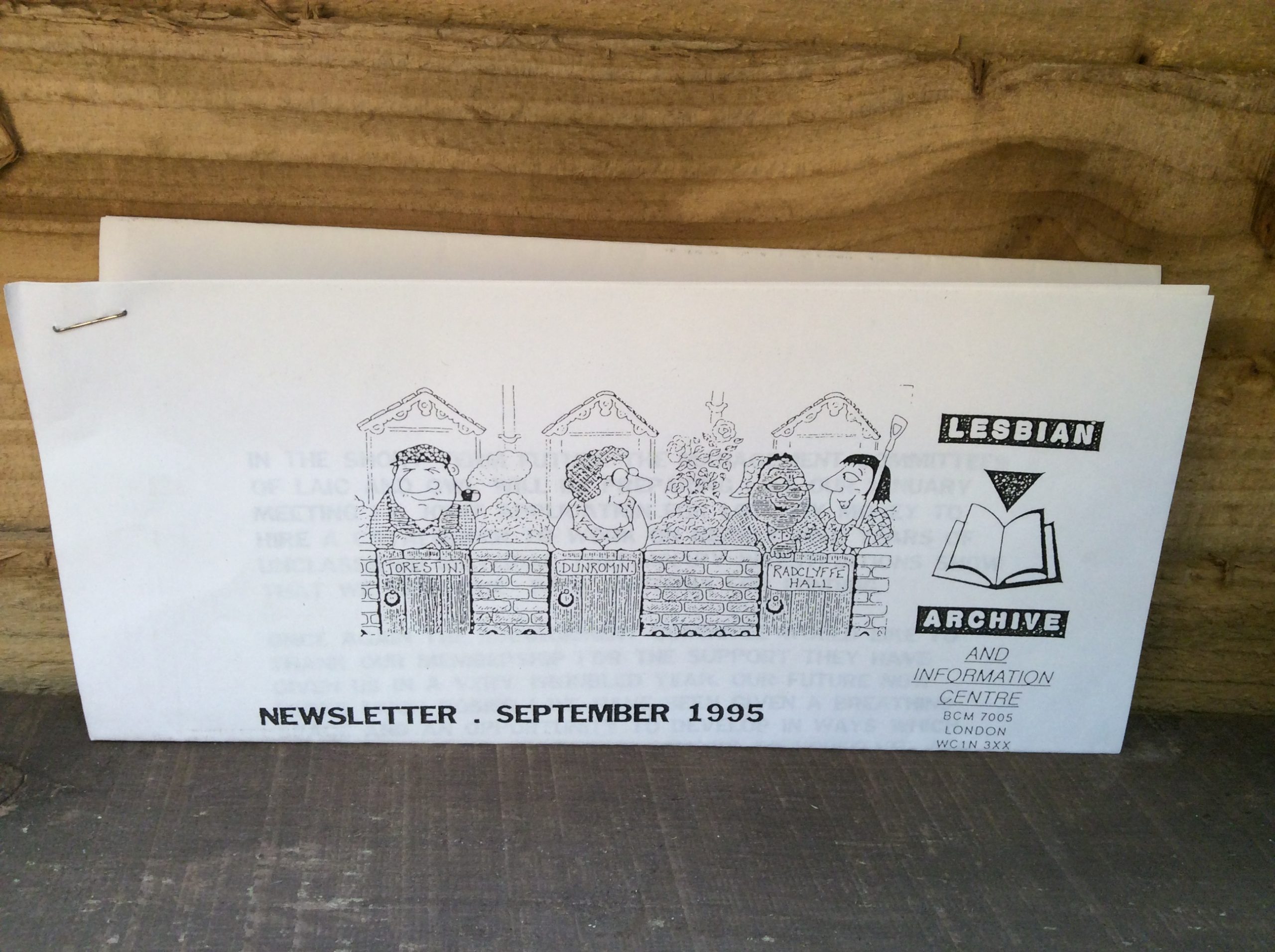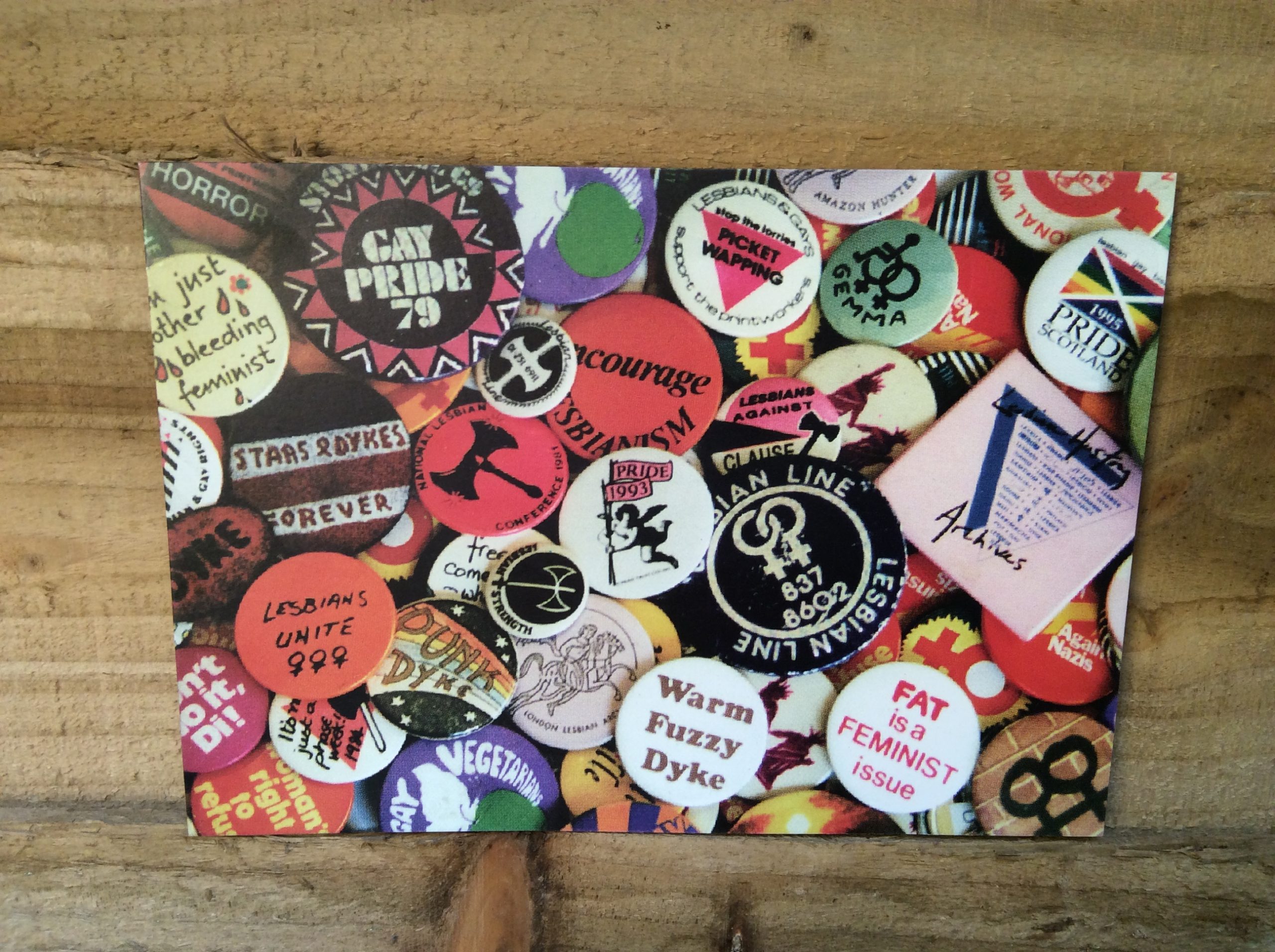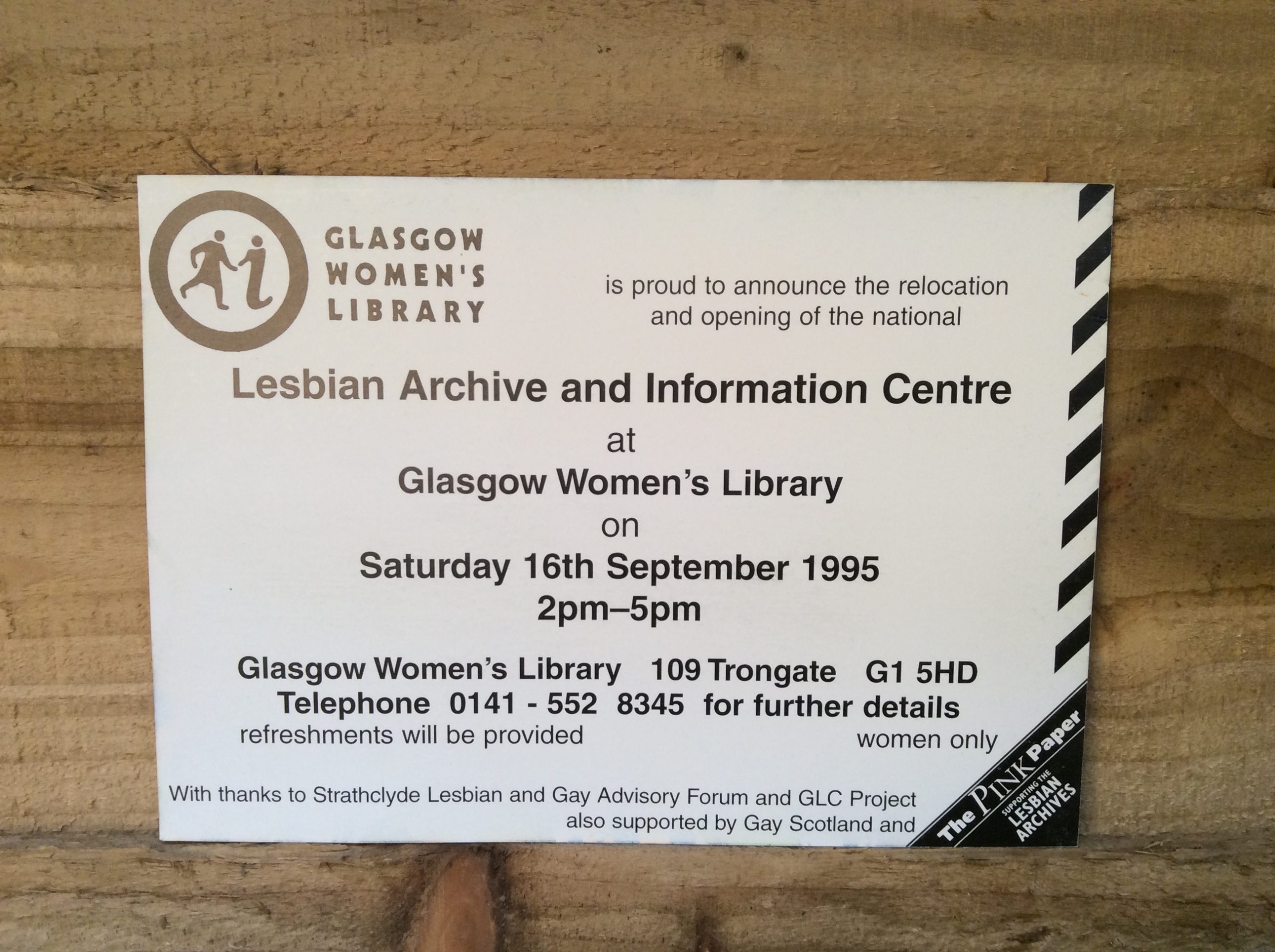Lesbian Archive & Information Centre (LAIC) Membership Card
donated by Natalie McGrath
 In 1995 I visited LAIC as it was beginning to pack up its collections and relocate to Glasgow Women’s Library. I had just finished my second year as an undergraduate and was beginning to research for my dissertation.
In 1995 I visited LAIC as it was beginning to pack up its collections and relocate to Glasgow Women’s Library. I had just finished my second year as an undergraduate and was beginning to research for my dissertation.
Little did I know then that one of the women there to welcome me was Jackie Forster. Jackie was an actor, a TV presenter, a founder of the magazine Sappho, part of CHE, the Campaign for Homosexual Equality and she was also at the very first UK Pride March in 1971. I just didn’t realise at the time I had met a legend of queer life. The penny dropped when I saw a documentary about Jackie as part of The Day That Changed My Life series in 1997. I also read about Jackie many years later in Diva or some other queer publication.
Luckily I took wine on that hot summer dusty London day, which was warmly received and drunk later at a meeting. I received a thanks for it with all the information about becoming a fully fledged member of LAIC and their summer newsletter. I’m sat here wondering how many other lesbians received that newsletter that summer and hoped that the archive would continue and thrive in its new home. It did and it has thankfully.

Years later the badges from this collection were resonant for me again as GWL were shortlisted alongside Dreadnought South West, which I co-run for an award at the Women’s History Network Prize Awards. It reintroduced me to the collection and led me to visiting GWL for the first time where they were running a big project on the Lesbian Archive, ensuring its presence through digital archiving and work would mean it could reach a whole new audience around the world. How times have changed!

Re-connecting with these queer objects this summer took me back to a time that is part of my story as a queer person. Section 28 was still having a huge impact, causing a lot of shame and damage to LGBTQ+ people. Thinking about it now it feels like LAIC was such a revolutionary space, and that as a collection it was and still is such a vital part of a wider growing picture of queer identities, lives lived and queerstories.
 These moments that I have joined up mark somewhere my own identity and queerness as a lesbian. As I get older and look back I understand the vitality of these collections more and more and funnily enough in a way it has probably led me to here. To this current wave of work I am doing queering the museum and the oral stories that will follow and become part of a permanent collection at RAMM. These pivotal fragments are emotional ones. It clearly struck a chord back then as well as now and these objects are something I have kept, preserved and valued for 25 years now.
These moments that I have joined up mark somewhere my own identity and queerness as a lesbian. As I get older and look back I understand the vitality of these collections more and more and funnily enough in a way it has probably led me to here. To this current wave of work I am doing queering the museum and the oral stories that will follow and become part of a permanent collection at RAMM. These pivotal fragments are emotional ones. It clearly struck a chord back then as well as now and these objects are something I have kept, preserved and valued for 25 years now.
I met Sue John from Glasgow Women’s Library a couple of years ago, who made the original design for the postcard. Sue recognised it when I shared it on Twitter this summer as her design work. Before cut and paste on computers there were scissors and glue to make things. Sue reminded me of the d.i.y culture that fuelled so much of queer cultural life at the time. I think that legacy continues to thrive.
The badges tell so many stories in the image and it makes me wonder how many lesbians they belonged to and over how long? Who wore them and where? Whether they were worn in public spaces or privately in havens of safety? Each individual badge tells and carries a human story. I particularly like the Warm Fuzzy Dyke badge.
